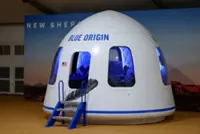Jorjin's MetaSpace M1 and M3 act as dedicated spaces for VR and AR activities. — Photos: CHRISTOPHER FAM/The Star
TAIPEI: Jorjin Technologies showcased its integrated virtual reality system, dubbed the MetaSpace M1, which features its own augmented reality (AR) glasses and Finnish manufacturer Varjo's mixed reality (MR) headset.
The MetaSpace M1 is essentially a soundproof booth equipped with everything a user could need for a MR experience, be it entertainment, a virtual workspace, or even a classroom.
Already a subscriber? Log in
Save 30% OFF The Star Digital Access
Cancel anytime. Ad-free. Unlimited access with perks.





